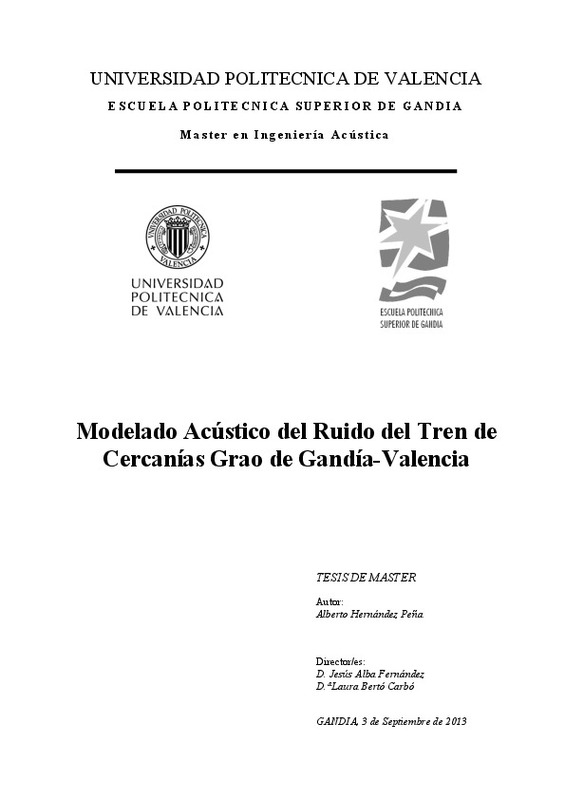|
Resumen:
|
El ferrocarril es uno de los medios de transporte público más utilizados en la actualidad. Esto supone la necesidad de
reducir los efectos negativos que produce, tales como ruido y vibraciones.
El presente trabajo final ...[+]
El ferrocarril es uno de los medios de transporte público más utilizados en la actualidad. Esto supone la necesidad de
reducir los efectos negativos que produce, tales como ruido y vibraciones.
El presente trabajo final de máster tiene como objeto la caracterización acústica del tren de cercanías con ruta Valencia-
Grao de Gandía, creando un modelo de simulación del ruido generado. Actualmente se hace uso del método de cálculo
nacional de los Países Bajos, denominado RMR, para dicho fin, bajo recomendación de la Comisión de las Comunidades
Europeas (Directiva 2002/4/CE). Este método requiere un comparativa entre trenes holandeses y españoles, para lo cual
se usa el documento "Caracterización de la emisión acústica de los trenes utilizados en el sistema ferroviario español",
presentado por ADIF. La campaña de medidas llevada a cabo se apoya en la Norma UNE-EN ISO 3095:2006, con el fin
de conseguir resultados reproducibles y comparables de los niveles y espectro sonoro. Por medio del software Predictor
V7.1, se realizan simulaciones basadas en el método RMR, a fin de establecer comparaciones que ratifiquen la necesidad
de desarrollar un modelo propio de simulación acústica del tren.
Dicho modelo de simulación será un modelo matemático que relaciona una variable dependiente, (nivel de ruido
generado por el tren), y diferentes variables independientes (constantes que definirán el modelo).
[-]
The railway is one of the public transports most used today. It supposes the need to reduce the negative effects it
produces, such as noise and vibrations.
The main objective of this work is the acoustic characterization ...[+]
The railway is one of the public transports most used today. It supposes the need to reduce the negative effects it
produces, such as noise and vibrations.
The main objective of this work is the acoustic characterization of the train with route Grau de Gandia-Valencia, creating
a simulation model of the generated noise. Nowadays is being used the national calculation method of the Netherlands
called RMR for that purpose, upon the recommendation of the Commission of the European Communities (Directive
2002/4/EC). This method requires a comparison between Dutch and Spanish trains, for which we used a document called
"acoustic emission characterization of trains used in the Spanish rail system," presented by ADIF. The measurement
campaign carried out is based on the UNE-EN ISO 3095:2006, in order to obtain reproducible and comparable results of
the levels and sound spectrum. Through Predictor V7.1 software, simulations are performed based on the RMR method
and later compared to ratify the requirement of developing an own model train acoustic simulation.
This simulation model will be a mathematical model that relates a dependent variable (level of noise generated by the
train) and different independents variables (constants that will define the model).
[-]
|







